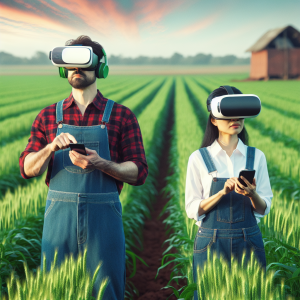In today’s world, technology continues to emerge as a potent tool to offset many contemporary challenges. At the intersection of technology and agriculture lies an opportunity to leverage the potency of Virtual Reality (VR) to bolster global food security. By marrying VR with the ubiquity and accessibility of smartphones, it’s possible to revolutionize the way family farmers acquire agricultural knowledge, consequently driving food security.
Virtual Reality, a technology long associated with gaming and entertainment, is rapidly gaining relevance in sectors like education and agriculture. VR provides an immersive and interactive experience, offering an ideal platform for effective learning. Incorporating it into a device as commonplace as a smartphone, deepens access to quality agricultural education for family farmers across the globe.

Family farmers are a critical link in the global food chain. However, challenges such as lack of adequate education and information can threaten their productivity, impacting food security. By integrating VR technology into smartphones, a device virtually in every household, it opens up a dynamic and promising pathway for bringing real-time farming education and strategies to these farmers.
VR learning on smartphones has an impressive potential. Through simulations of different farming scenarios and techniques, VR can offer farmers firsthand experience without the need for physical presence. The immersive nature of Virtual Reality can demonstrate various farming practices logically and practically alongside their predicted outcomes. The experience, interaction, and understanding gleaned from VR setups can significantly help farmers make knowledge-based decisions, ultimately leading to better crop yields and food security.
Visual-based learning facilitated by VR can also be a game-changer in places where literacy rates are low. By visually demonstrating specific actions and their consequences, VR can streamline the understanding and adoption of more productive, sustainable farming approaches.
Furthermore, smartphones equipped with VR capabilities also provide access to a global community of farmers where unique and various farming practices can be shared, discussed, and implemented. This connection can lead to greater collaborative and collective actions towards achieving global food security.
In conclusion, Virtual Reality, paired with the pervasiveness of smartphones, offers distinct possibilities for promoting farmer education and consequent global food security. Given its potential, investing in VR-based learning methods for agriculture can play a significant role in navigating the global food security challenge. This combination fosters inclusion, innovation, and interaction, making it not just a technological revolution, but a social revolution.
